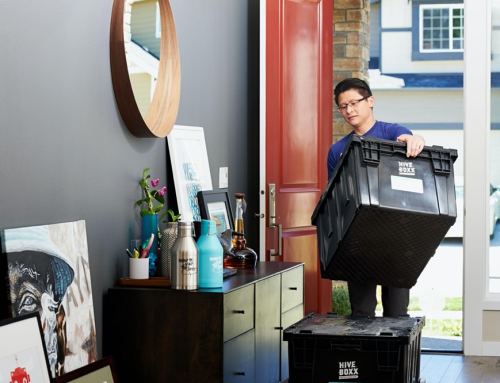 |
Image Source: Unsplash
Children thrive on routine, and change can cause extra anxiety. Unfortunately, the last two years have been riddled with change for all of us – including kids. If you already have an anxious child, you may have had a hard time getting them used to virtual learning at the beginning of the pandemic.
Now, we’re living in a world filled with COVID variants, and everything seems to be changing faster than ever. Nevertheless, many people are trying to return to some state of normalcy, including teachers and administrators at schools across the country.
While many children have already started to attend school in person, some have still been learning at home all this time. Whether your child is just about to go back or has already started and is having a hard time adjusting, it can be difficult for you, as a parent, to facilitate their needs and keep them comfortable.
Thankfully, there are things you can do to help your anxious child adjust to school in person. While there is still quite a bit of uncertainty going on in the world, helping your child combat this anxiety will make the idea of getting back to normal easier for both of you.
So, what can you do to help?
Engaging Their Learning Style
Children have different learning styles, and encouraging those styles can make it easier for them to feel comfortable in an in-person environment. Some of the most common types of learners include:
- Visual
- Auditory
- Kinesthetic
- Reading/writing
If you know your child seems to enjoy a more hands-on approach to learning, consider working with their teacher to introduce more STEM-based activities in the classroom. Or, if you’re considering a hybrid approach, make sure to include STEM activities at home. Experiential learning through STEM has been shown to improve memory retention, boost motivation, and improve collaborative efforts.
No matter what your child’s preferred approach to learning, it can be helpful to discuss options with their teacher, especially if they’re nervous about re-entering the classroom. Most educators are more than willing to do what it takes to make every child feel comfortable and safe, so don’t be afraid to ask questions, make suggestions, and work together as a team to come up with what’s best for your child.
Maintaining a Routine
Children are only in school for a portion of the day. Even if they’re struggling with anxiety about going back, you can help to combat that by making other areas of their lives as “normal” and routine as possible. Daily routines have benefits for kids and parents alike, including:
- They reduce parental stress
- They boost confidence in children
- They help to establish healthy habits
- They keep kids grounded during times of stress or uncertainty
When your kids know what to expect at home, they might start to feel less anxious about going to school each day. Eventually, they will fall into a familiar routine with in-person learning again. In the meantime, you can alleviate some of their anxiety by surrounding them with a familiar schedule and sticking to it.
Everyone’s routine will be slightly different, but should include things like going to bed at the same time each night, having a few morning rituals for school, and having a few things set in place to do after school each day. It might seem like a small thing, but having a routine can make a big difference in your child’s anxiety levels.
Trying Calming Extracurricular Activities
In addition to ensuring your child has a comfortable routine, make sure they take part in some calming extracurricular activities outside of school. Encourage their hobbies and interests, or try new things that are naturally calming, like spending more time outdoors. Being outside is a natural way to reduce stress, increase happiness, and help with mental health issues like anxiety and depression.
Taking your kids camping, for example, is a great way to teach them a lot of new things (especially for hands-on learners!) and expose them to the mental health benefits of nature as well. If you’re not into camping, try simpler things like hiking, fishing, or even lounging around in your backyard before a family cookout.
Even extracurricular activities set up by the school can help your child to feel more comfortable with in-person learning. For example, if they’re into sports, music, or drama, see if any of those things are offered at school and encourage them to participate. When they start to associate the building and people with something they enjoy, they’re less likely to be anxious about learning there each day.
So many children have had to deal with a variety of changes over the last two years, so it’s understandable that some are more anxious than others about going back to school in person. Keep these tips in mind to make the transition easier. When you take things slowly and make your child’s mental health a priority, they’re more likely to adjust in productive ways and eventually feel completely comfortable attending school in person again.
This is a guest post from Luke Smith. Luke is a writer and researcher turned blogger. Since finishing college he is trying his hand at being a freelance writer. He enjoys writing on a variety of topics but relationship topics are his favorite. When he isn’t writing you can find him traveling, hiking, or gaming.








Leave a Reply